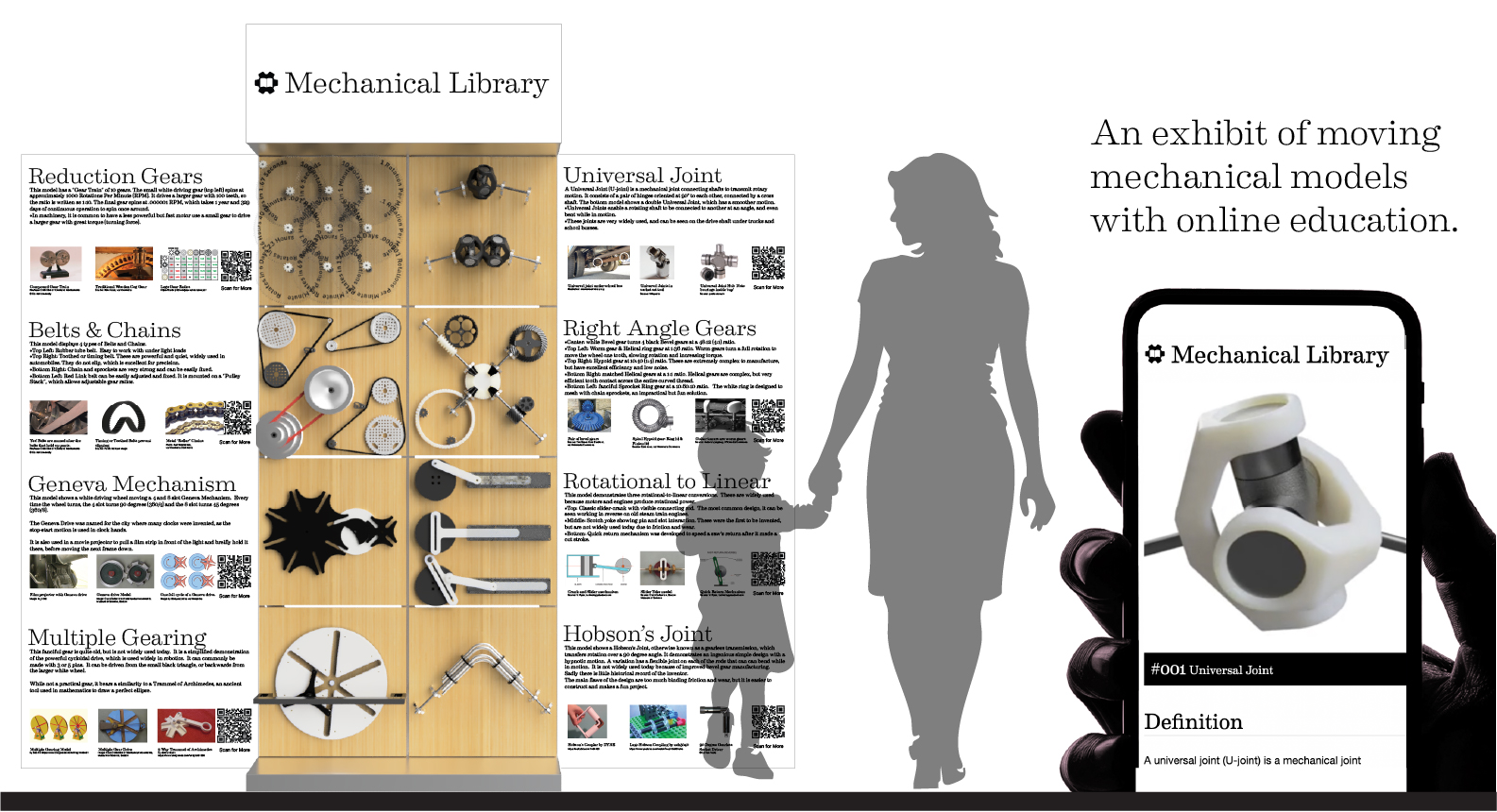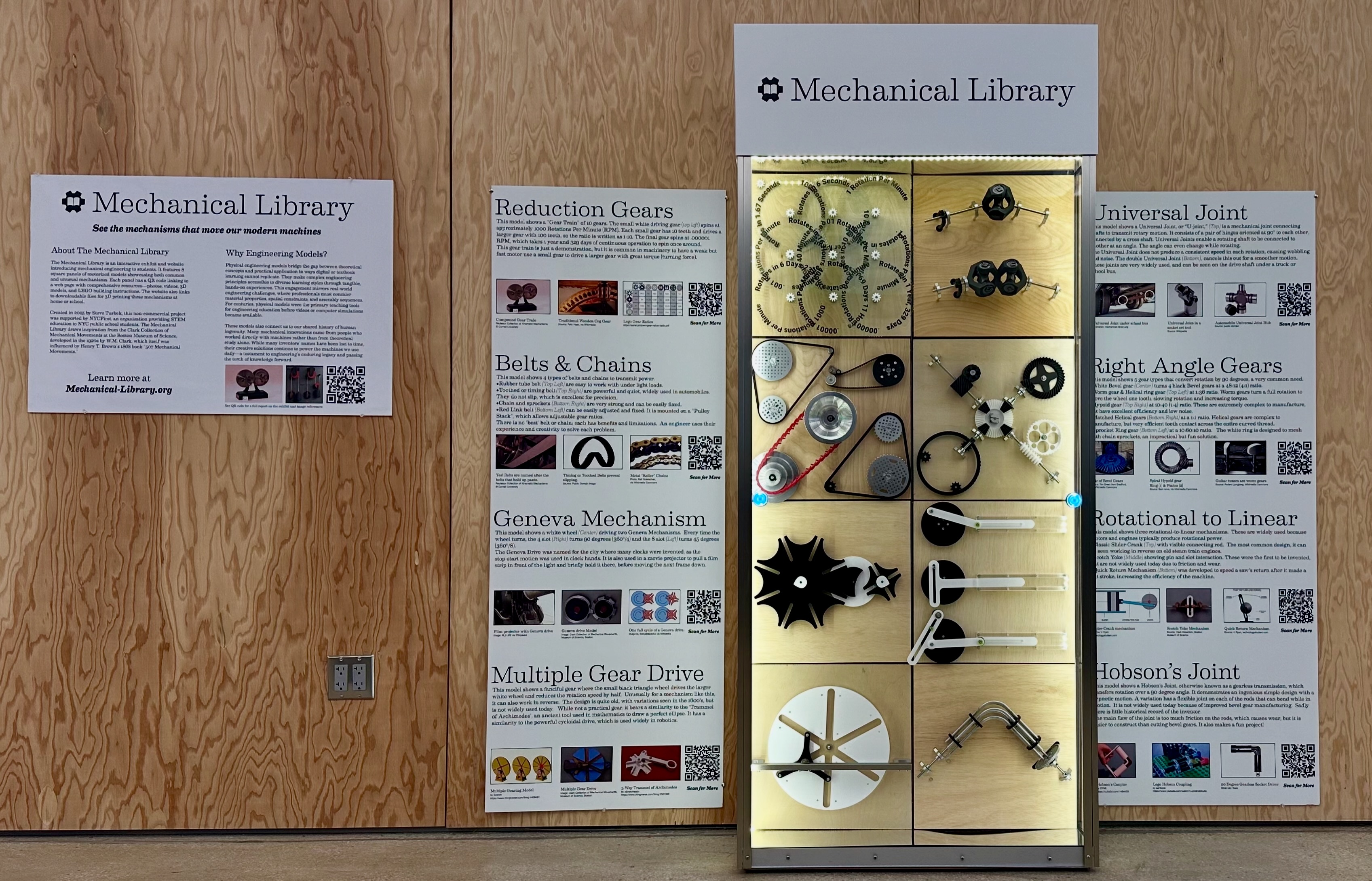
The Mechanical Library is an open-source exhibit and curriculum to introduce mechanical engineering to middle and high school student. The 6-foot-tall exhibit of moving mechanical models demonstrate important or interesting engineering inventions. Each mechanism has a web page that explains how the mechanisms are used in real life. It has photos, videos, 3D models, & lego models.
We hope to support STEM education by sparking curiosity in how things work. Learn more about the project
The exhibit is currently in development, follow @mechanical.library and @SteveTurbek on Instagram
The Library
Click a mechanism below to learn more, watch videos, see 3D models, make 3D prints, and build Lego models.
Photos of Mechanical Library Cabinet


View in 3D
Potential Phase 2 Elements
- Capstan Drive
- Square & Spiral Gears, Gears trains with missing teeth
- Ropes, Wires, & Pulleys
- Cam & Follower (external and in groove)
- Cams & Eccentric Drive, heart shape and wave wheel
- Friction & Mechanical clutch
- Cycloidal drive
- Constant Velocity Joint
- Continuously Variable Transmission
- Steam & Combustion Piston & Crankshaft
- Fluids (hydraulics) & Air pressure (pneumatics)
- Springs: linear and torsion
- One way bearing - roller clutch
- An epicyclic train
- 4 Bar linkages
- Reuleaux Triangle "positive return” cam 1,2
About Mechanical Library
The Mechanical Library is being built by Steve Turbek. Mechanical Library is a non-commercial labor of love, with support by NYCFirst, who provides meaningful and joyful STEM and robotics programming to NYC public school students.
The Mechanical Library is inspired by the 1920's "Mechanical Wonderland" museum exhibit by W.M. Clark, which was inspired by the book "507 Mechanical Movements" by Henry T. Brown. Here is our custom research into the history of the exhibits. More research and sources.
If you would like to become a partner or sponsor, please contact steve (at) turbek.com
Mechanical Library Project Goals
The Mechanical Library is inspired by great science and engineering teachers worldwide.
- Inspire the 'engineering mindset' in middle to high school students, especially those not excited by math and engineering.
- Make something interesting for kids and parents to introduce Mechanical Engineering using practical demonstrations.
- Communicate the opportunities for a career in the well-paid physical technical fields.
- Support teachers who cover these subjects.